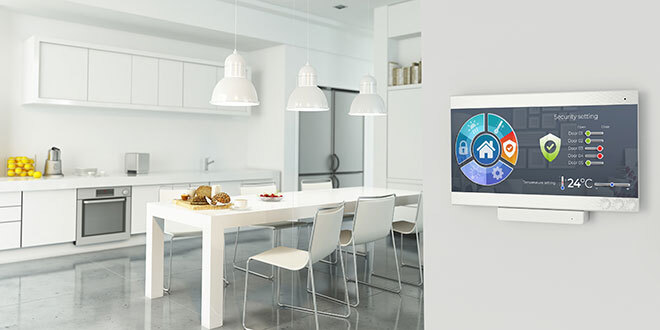Smart home technology is becoming more affordable and more popular among homeowners. From Wi-Fi enabled speakers to video doorbells and lightbulbs controlled by smartphones, smart technology brings new levels of safety and customization to DIYers.
New data from the Home Improvement Research Institute (HIRI) shows the smart home technology industry is growing rapidly, clocking in at $58.5 billion in sales last year and expected to exceed $175 billion by 2025. HIRI reviewed Omdia’s 2021 State of the Smart Home Report to understand key trends shaping the industry and what retailers should know to guide their inventory in the years to come.
1. Retail is the gateway to smart home purchases.
Retail accounted for roughly 88 percent of all smart home device shipments in the U.S. in 2020, proving brick-and-mortar and e-commerce operators are the trusted partners for customers looking to outfit their homes with new tech enhancements.
“We estimated the number of apartments in the U.S. with smart devices will increase from about 930,000 in 2020 to 11.9 million in 2025,” says Blake Kozak, senior principal analyst for Omdia.
In addition, single-family homebuilders are expected to start offering smart home devices as standard features of their homes, not as expensive upgrades, which will also drive sales.
2. New industry standards will make purchases and installs easier.
When smart home devices first hit the market, the patchwork of manufacturers and operating systems made installing and configuring separate components difficult. As the industry evolved and new standards have emerged, retailers can expect more products to work together to streamline sales, installation and usage.
3. COVID-19 prompted a temporary market slowdown.
Unlike some categories, which saw sales skyrocket during the COVID-19 pandemic, the smart home industry experienced a relative slowdown. This trend was partly motivated by the need for expert installation for some smart home products. But it also encouraged some DIYers to try installation themselves.
But the continuing effects of the pandemic could also force an eventual rise in smart home adoption, Kozak says. As certain variants have emerged, more people are again spending time at home and exploring how smart technology can make their spaces more comfortable and safer.
4. Your inventory might be getting a smart upgrade.
Kozak says the smart home industry will see a record number of new product announcements this year and next, prompting many retailers to reevaluate their smart home inventory.
In addition to wellness-related smart home technology, Kozak says new products will focus on security, voice commands, radar insights and energy/water management to serve customers better.
“Creativity is an integral part of any smart home,” Kozak says. “For the consumer, this means creating scenes and automation that fit their needs.”
The HIRI Summit, an annual gathering of home improvement industry analysts, economists and trend experts, is scheduled for Sept. 21-23. Attendees to the Summit get access to leading home improvement experts who offer advice and knowledge on the latest home improvement headlines, trends and shopping data. Register today to learn what’s next for the channel.
 Hardware Retailing The Industry's Source for Insights and Information
Hardware Retailing The Industry's Source for Insights and Information








